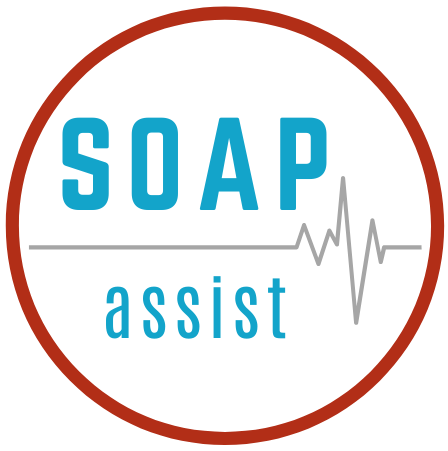The SOAP Note – Subjective
The structure of the SOAP note is emphasized in its name. It stands for subjective, objective, assessment and plan. The SOAP note format has been universally adopted for note writing in the medical community. In this article, we will discuss the first section of the medical SOAP note and its importance in documentation.
Generally, the medical SOAP note is structured to mirror the typical order of events during an encounter. This convention helps to streamline communication between providers. The convention of the medical SOAP note makes finding information within the medical record easier. Details about what the patient said can be found in the subjective section. The providers thoughts can be found in the assessment section. If these items need to be referenced in the future, they can easily be due to the conventional format.
The subjective section of the medical SOAP note is all about the patient’s story. Providers often include direct patient quotations. The section often begins with a chief complaint. This conveys to the reader what the patient was most concerned about. The chief complaint is followed by the history of present illness. This section is effectively the patient’s assessment of the problem. Yet, the provider is responsible for asking pertinent questions related to the problem. A robust patient history is often crucial in determining a diagnosis.
As we have said, the Medical SOAP Note structure is a convention. Yet, the note often contains other conventions as well. Most providers will include information in the subjective section that is documented in a conventional way. Some details include onset of illness, palliating factors, radiation of symptoms, quality of symptoms, severity, and timing. Other information that is often collected includes whether or not this symptom has happened before, recent illness, recent change in medications, sick contacts and recent travel. This information can shed light on the cause of the patient’s symptoms.
The subjective portion of the note often details the review of systems. This is an overall assessment of the patient’s symptomatology. It can clue a provider into other things that may be going on in addition to the chief complaint. The review of systems is a more broad approach to understanding the patient’s symptoms. A more focused approach is also detailed in the subjective section. These are typically denoted as associated symptoms. Associated symptoms help further characterize the chief complaint. It allows a provider to assess if a differential diagnosis is consistent with the patient’s presenting symptomatology.
Other items detailed in the subjective section include allergies, medications, medical history, surgical history, family history, and social history. Some of this information is acquired through chart review. As such, it is not strictly subjective. However, there are subjective influences. For example, a patient may be prescribed a particular set of medications. However, the patient may not be taking all of the medications in the way they were prescribed. Additionally, patients may be prescribed as needed medications. Knowing how frequently a patient is taking these medications can shed light on the severity of an illness.
The components of the subjective history can play an important role in determining a diagnosis. Understanding what is in and what is not in the patient’s medical history is extremely important. Many providers elect to document a patient’s medical history in a particular section. However, it can also be helpful to detail what is not in the patient’s medical history as it relates to the problem at hand. For example, understanding that a patient with electrolyte abnormalities does not have a history of kidney disease is important.
We see that convention within the subjective section of the SOAP note is helpful. It helps providers in their line of questioning and ultimately determine a diagnosis. It helps in communication between providers. SOAPassist has developed a tool to maximize these conventions. Utilizing templates organized with these conventions, providers can streamline and maximize their documentation and overall patient care.
The SOAPassist curated SOAP note templates are a good starting point for providers in dealing with many common complaints. As we have discussed, history of present illness has some components that are almost always present. SOAPassist curated templates contain all of these elements. Obviously, patient input and customization is required. Sections for provider input and customization are laid out in an organized fashion through the use of underscores. Sentences are structured as to be broadly applicable and yet relevant. Common subjective history questions are also detailed in this section. These provide reminders to the provider of which questions to ask. This reduces instances of missed questions and missed diagnoses.
Disclaimer: SOAPassist curated templates are created for use by licensed medical providers. While they are examples of what a provider might document, their intended purpose is to provide a starting point for documentation and do not constitute medical recommendations.

